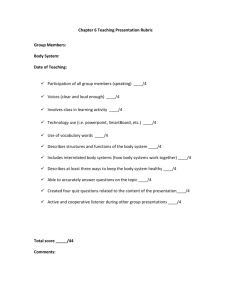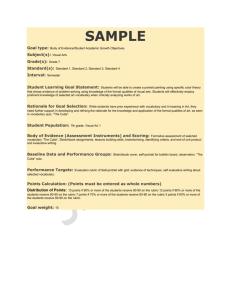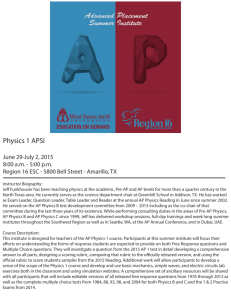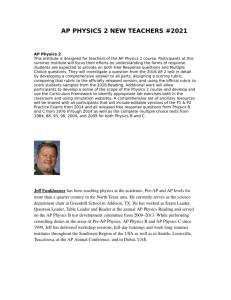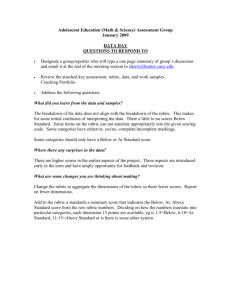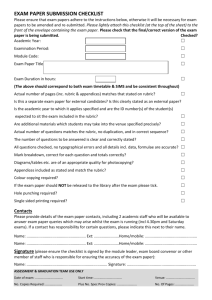Core Plus Grading Rubric Guide
advertisement
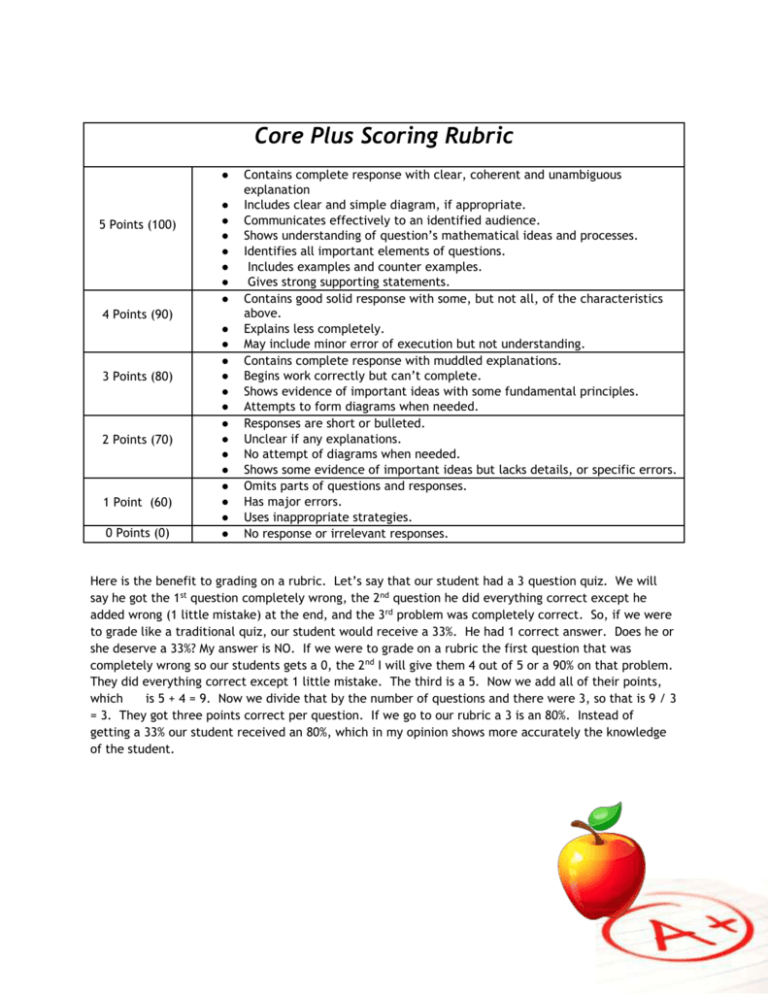
Core Plus Scoring Rubric ● 5 Points (100) 4 Points (90) 3 Points (80) 2 Points (70) 1 Point (60) 0 Points (0) ● ● ● ● ● ● ● ● ● ● ● ● ● ● ● ● ● ● ● ● ● Contains complete response with clear, coherent and unambiguous explanation Includes clear and simple diagram, if appropriate. Communicates effectively to an identified audience. Shows understanding of question’s mathematical ideas and processes. Identifies all important elements of questions. Includes examples and counter examples. Gives strong supporting statements. Contains good solid response with some, but not all, of the characteristics above. Explains less completely. May include minor error of execution but not understanding. Contains complete response with muddled explanations. Begins work correctly but can’t complete. Shows evidence of important ideas with some fundamental principles. Attempts to form diagrams when needed. Responses are short or bulleted. Unclear if any explanations. No attempt of diagrams when needed. Shows some evidence of important ideas but lacks details, or specific errors. Omits parts of questions and responses. Has major errors. Uses inappropriate strategies. No response or irrelevant responses. Here is the benefit to grading on a rubric. Let’s say that our student had a 3 question quiz. We will say he got the 1st question completely wrong, the 2nd question he did everything correct except he added wrong (1 little mistake) at the end, and the 3rd problem was completely correct. So, if we were to grade like a traditional quiz, our student would receive a 33%. He had 1 correct answer. Does he or she deserve a 33%? My answer is NO. If we were to grade on a rubric the first question that was completely wrong so our students gets a 0, the 2nd I will give them 4 out of 5 or a 90% on that problem. They did everything correct except 1 little mistake. The third is a 5. Now we add all of their points, which is 5 + 4 = 9. Now we divide that by the number of questions and there were 3, so that is 9 / 3 = 3. They got three points correct per question. If we go to our rubric a 3 is an 80%. Instead of getting a 33% our student received an 80%, which in my opinion shows more accurately the knowledge of the student.


